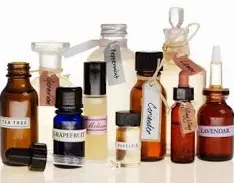By Zadra Rose Ibañez
Outside of her work at IEA, Zadra helps educate others in sustainable ways to support wellness and healthcare, including the use of essential oils and products.

Essential oils (EO’s) can have numerous beneficial effects on kids as well as adults and can be a holistic solution to health and mood concerns. They can reduce anxiety, increase focus, and have even been shown to have a positive impact in the classroom.
What is an Essential Oil?
An essential oil is a natural aromatic compound found in plant parts. “In addition to giving plants their distinctive smells, essential oils provide plants with protection against predators and disease and play a role in plant pollination….Essential oils have been used throughout history in many cultures for their medicinal and therapeutic benefits.” (1)
How/why do they work?
Our bodies respond well to natural materials like plant oils. These molecules can penetrate cell walls to deliver maximal benefits, without the side effects many pharmaceuticals can have.
Essential oils can be used aromatically, topically or internally. Most are safe for all three uses, but be sure to check the label to ensure that the essential oil is safe for your desired method of administration.
In his paper Attention Deficit Hyperactivity Disorder (ADHD), Terry S. Friedmann, M.D., M.D.(H), A.B.I.H.M., writes, “When essential oils are inhaled, they not only provide exquisite fragrances, but they have also proven to be able to produce physical, emotional, mental, and spiritual well-being of people since the beginning of time.”
Our sense of smell influences many physiological pathways, including the stimulation of hormones and other metabolic processes. Essential oils have been used in aromatherapy to create a calming effect (lavender), or to stimulate or invigorate one’s energy (wild orange). Studies have shown that certain essential oils may have the ability to prevent the transmission of some drug-resistant strains of pathogen, specifically Staphylococcus, Streptococcus and Candida. (2)
Diffusing essential oils can purify air of unwanted odors and some airborne pathogens. They are also natural disinfectants.
What are they used for?
You can use essential oils one at a time or blend several oils together, depending on how experienced you are and what benefit you are seeking. Essential oils can be used for a wide range of emotional and physical wellness goals.
Here are some examples of how essential oils can be used:
- Lavender –add a couple of drops to a cotton ball and place beneath your child’s pillow for a calming effect, especially helpful if your child has a difficult time sleeping; apply a couple of drops behind the neck to help reduce anxiety – perfect for right before a big test or project; apply directly to skin irritations such as burns or insect bites to soothe or reduce redness and swelling
- Wild Orange – place drops in the palm of the hand, rub hands together, and smell the aroma to elevate mood; diffuse to increase focus, including in a classroom; add to water for yummy flavor!
- Peppermint – apply to neck for a refreshing, cooling effect if your child has a fever or is affected by extreme heat; diffuse to open airways; apply topically to stomach or drop in water to soothe upset stomachs (Keep in mind: peppermint is a very strong essential oil – a little goes a long way.)
- Lemon – take internally to detox the body; add to water for flavor; use to clean countertops, etc., for its antibacterial effect
- Melaleuca – put on bottoms of feet or apply topically near affected area to use as a disinfectant or for antibacterial or antifungal qualities (Very mild)
- Oregano – put on bottoms of feet for its strong antifungal, antiviral, antibacterial properties or to help prevent infection
What to look for?
When looking for an essential oil, be sure to check for the following to receive the most therapeutic benefits:
- 100% pure – this means there are no additives or fillers
- Complete – the oil is not diluted or missing any molecules
- Therapeutic-grade – for the most potency and safety
- Not synthetic – the best oils are cold-pressed or steam-distilled and are not synthetic. Synthetic oils do not have all the properties that natural plant oils have and will not be as effective
- Be sure to follow all label warnings and instructions
Cautions for using essential oils with children
- Children often have very sensitive skin. It is a good idea to apply a tiny amount of oil to test for sensitivity. To slow the rate of absorption into the skin, you can apply a layer of vegetable oil first and then apply the essential oil afterward. Also, for very small children, avoid putting oils on their hands, as they may rub their eyes or put their hands in their mouths.
- EO’s should never be used in the eyes, ears or nose.
- If irritation or redness occurs, apply vegetable oil, such as fractionated coconut oil or olive oil, or milk to dilute the oil. Never flush with water, as this will only drive the oil in further and cause the irritation to be more intense.
- It is important to consult your physician before using essential oils if you are pregnant or under a doctor’s care.
Essential oils can provide a holistic option to health concerns and mood enhancement and are a lot of fun!
Questions? Contact Zadra at IEAgifted@educationaladvancement.org.
(1) doTERRA website
(2) Warnke, P. H.; Becker, S. T.; Podschun, R.; Sivananthan, S.; Springer, I. N.; Russo, P. A. J.; Wiltfang, J.; Fickenscher, H. et al. (2009). “The battle against multi-resistant strains: Renaissance of antimicrobial essential oils as a promising force to fight hospital-acquired infections”. Journal of Cranio-Maxillofacial Surgery 37 (7): 392–397.

